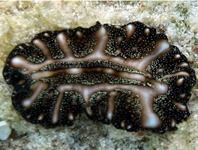Abstract
Mounting and preparing arthropods in liquids for photography and further investigations is a challenging task and may lead to unsatisfactory results and, in the worst case, to damage to specimens. A new method is presented here, which allows the fixation of specimens of different sizes under various degrees of pressure. The method is illustrated by three case studies from different groups of insects and arachnids.
References
Day, M. (1988) Spider Wasps. Hymenoptera: Pompilidae. In: Dolling, W.R. & Askew R.R. (Eds.), Handbooks for the Identification of British Insects. Vol. 6, Part 4. Royal Entomological Society of London, pp. 1–60.
Dayrat, B. (2005) Towards integrative taxonomy. Biological Journal of the Linnean Society, 85 (3), 407–15.
https://doi.org/10.1111/j.1095-8312.2005.00503.x
Denis, M. & Schiffermüller, J.I. (1775) Ankündung eines systematischen Werkes von den Schmetterlingen der Wienergegend. Verlegts Augustin Bernardi, wen, 323 pp.
Guadanucci, J.P.L. & Gallon, R.C. (2008) A revision of the spider genera Chaetopelma Ausserer 1871 and Nesiergus Simon 1903 (Araneae, Theraphosidae, Ischnocolinae). Zootaxa, 1753, 34–48.
https://doi.org/10.11646/zootaxa.1753.1.2
Guadanucci, J.P.L. & Wendt, I. (2014) Revision of the spider genus Ischnocolus Ausserer, 1871 (Mygalomorphae: Theraphosidae: Ischnocolinae). Journal of Natural History, 48 (7–8), 387–402.
https://doi.org/10.1080/00222933.2013.809492
Haselböck, A., Schilling, A.-K., Wendt, I. & Holstein, J. (2018) Alternative Methode zur manuellen Fixierung von flüssigkonservierten Arthropoden für die makroskopisch-fotografische Dokumentation. Arachne, 23 (1), 13–17.
Hausmann, A. & Viidalepp, J. (2012) Larentiinae I. In: Hausmann, A. (Ed.), The Geometrid Moths of Europe. Vol. 3. Apollo Books, Vester Skerninge, pp. 1–743.
Hübner, J. (1809) Sammlung europäischer Schmetterlinge, Horde 6. Pyralides-Zunsler. Augsburg, pls. 32.
Krogmann, L. & Vilhelmsen, L. (2006) Phylogenetic implications of the mesosomal skeleton in Chalcidoidea (Hymenoptera: Apocrita) - Tree searches in a jungle of homoplasy. Invertebrate Systematics, 20, 615–674.
https://doi.org/10.1071/IS06012
Krogmann, L. & Austin, A. (2011) Systematic revision of the spider wasp genus Sphictostethus Kohl (Hymenoptera:Pompilidae: Pepsinae) in Australia with description of nine new species. Stuttgarter Beiträge zur Naturkunde A, Neue Serie, 4, 105–128.
Martin, J.E.H. (1977) Collecting, preparing and preserving insects, mites, and spiders. In: The Insects and Arachnids of Canada. Part 1. Biosystematics Research Institute, Canada, Ottawa, pp. 1–182.
Müller, B., Erlacher, S., Hausmann, A., Rajaei, H., Shivonen, P. & Skou, P. (2019) Ennominae II. In: Hausmann, A., Rajaei, H., Shivonen, P. & Skou, P. (Eds.), The Geometrid Moths of Europe. Vol. 6. Brill, pp. 1–906.
Mutanen, M. & Pretorius, E. (2007) Subjective visual evaluation vs. traditional and geometric morphometrics in species delimitation: a comparison of moth genitalia. Systematic Entomology, 32, 371–386
https://doi.org/10.1111/j.1365-3113.2006.00372.x
Padial, J.M., Miralles, A., De la Riva, I. & Vences, M. (2010) The integrative future of taxonomy. Frontiers in Zoology, 7 (1), 16.
https://doi.org/10.1186/1742-9994-7-16
Robinson, G.S. (1976) The preparation of slides of Lepidoptera genitalia with special reference to the Microlepidoptera. Entomologist’s Gazette, 27, 127–132.
Scoble, M.J. (1992) The Lepidoptera: Form, Function and Diversity. The Oxford University Press, Oxford, 404 pp.
Su, Y.N. (2016) A simple and quick method of displaying liquid-preserved morphological structures for microphotography. Zootaxa, 4208 (6), 592–593.
https://doi.org/10.11646/zootaxa.4208.6.6
Ungureanu, E. M. (1972) Methods for dissecting dry insects and insects preserved in fixative solutions or by refrigeration. Bulletin World Health Organization, 47, 239–244.
Wanke, D. & Rajaei, H. (2018) An effective method for the close up photography of insect genitalia during dissection: a case study on the Lepidoptera. Nota lepidopterologica, 4 (1), 219–223.
https://doi.org/10.3897/nl.41.27831
Wiśniowski, B. (2009) Spider-hunting wasps (Hymenoptera: Pompilidae) of Poland. Diversity, identification, distribution. Ojców National Park, 432 pp.

